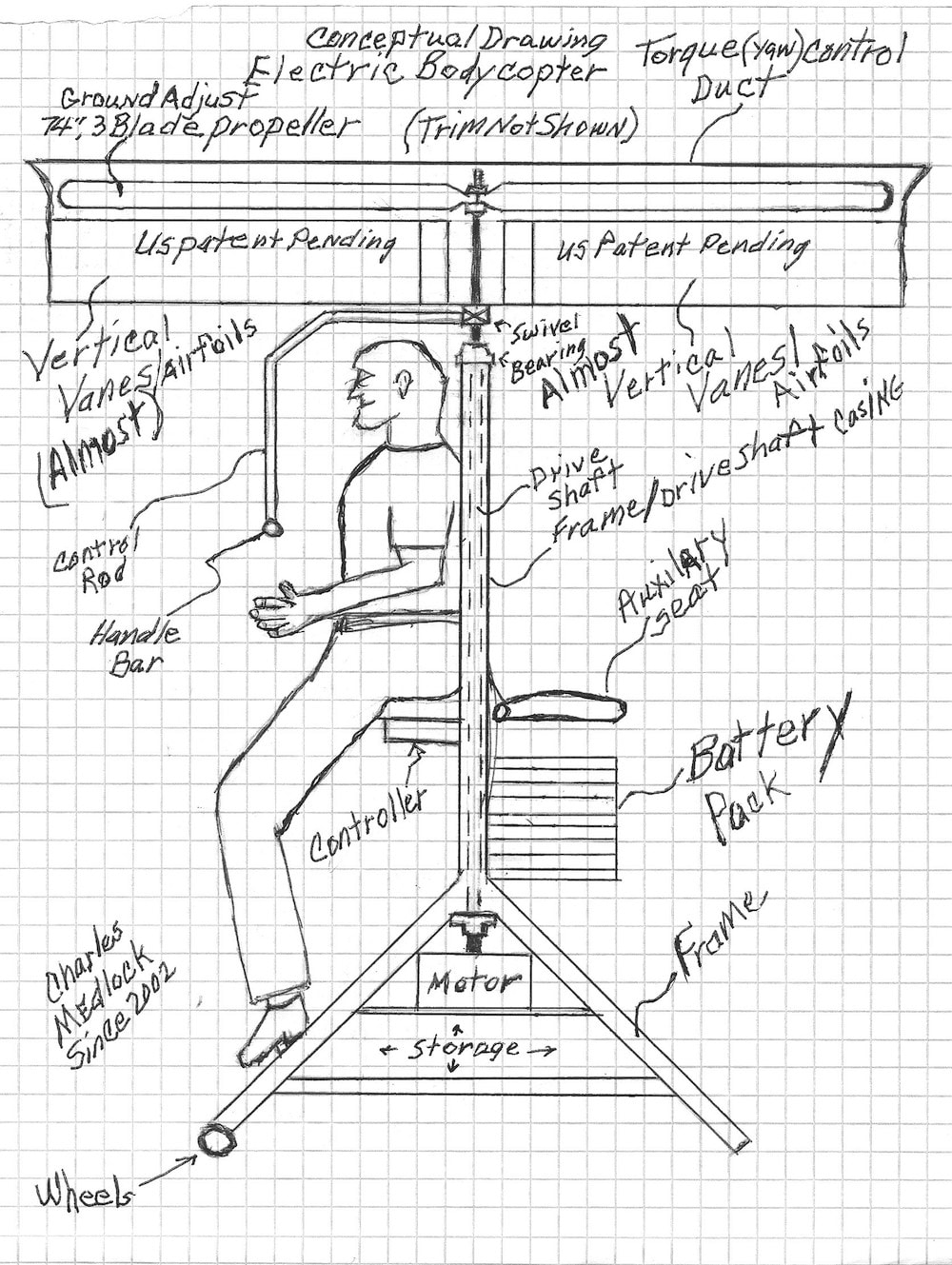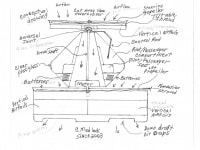Classically trained engineers have been left with the impression it is impossible to control 100% of the torque generated by a single lift rotor, using only the downdraft, within the same diameter as the lift rotor, because 100% of the torque minus 100% of the torque would leave no useable downdraft or zero lift.
This illusion has stymied the development of a torque control system with many potential applications.
Below is an abstract chosen by academics of the 2010 IPLC and vtol.org for presentation. Our websites are bodycopter.com and tsvls.com
The TSVLS solves the problem by locating a lift rotor over vertical airfoils arrayed within a shroud to create “horizontal lift” in an anti torque direction. Our testing shows 100% of the torque can be controlled, balanced, with anti torque forces, even while the airfoils are at a low angle of attack.
Our testing also shows the torque remains in balance, except for minor trim adjustments, even when power and load is increased and decreased, because as power is increased, the downdraft is increased and the anti torque forces are increased. The torque control is built into the TSVLS module, making it absolutely dependable.
Our thought challenge was to visualize how man could take off and land from his driveway and fly just above treetop with the least amount of hardware. The TSVLS is our solution to that challenge.
The results of that thought challenge has lead us to believe the TSVLS is the cheapest, safest, simplest, absolutely dependable way to accomplish personal vertical flight. The TSVLS could be used in UAVs, as a defensive military platform, to create a 4 to 6 passenger VTOL family flyer, a 2 seat flyer, as an indoor Radio Controlled hobby craft, and in commercial and industrial lifting.
We believe the TSVLS will prove to use less power to control torque than any other method currently employed, whether it be a tail rotor, contra rotating props, or counter rotating props. The TSVLS increases lift/thrust by up to 40% because the lift rotor is located within a type “B” shroud. Airfoils have been shown to create up to 30 times the drag they create. These facts indicate the TSVLS will operate at
over 100% of the lift a rotor can produce without it, while controlling 100% of the torque generated by a single lift rotor.
Above is the abstract chosen by academics for presentation at the 2010 IPLC and the 2011 vtol.org Future of Flight conferences.
Our websites are bodycopter.com and tsvls.com
Below is a video slide show of our first test flight in July 2014 and photos and drawings of models and applications.
The main advantages of my design are its size, weight, one piece modular construction, it has no exposed rotor blades and it remains in torque balance under changing load and power settings. Please vote for us. Thanks,
Video
Like this entry?
-
About the Entrant
- Name:Charles Medlock
- Type of entry:individual
- Software used for this entry:prop selector
- Patent status:pending








